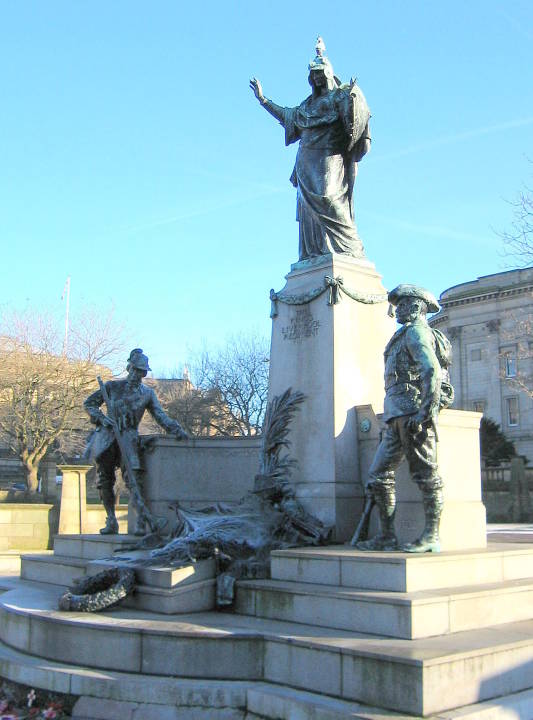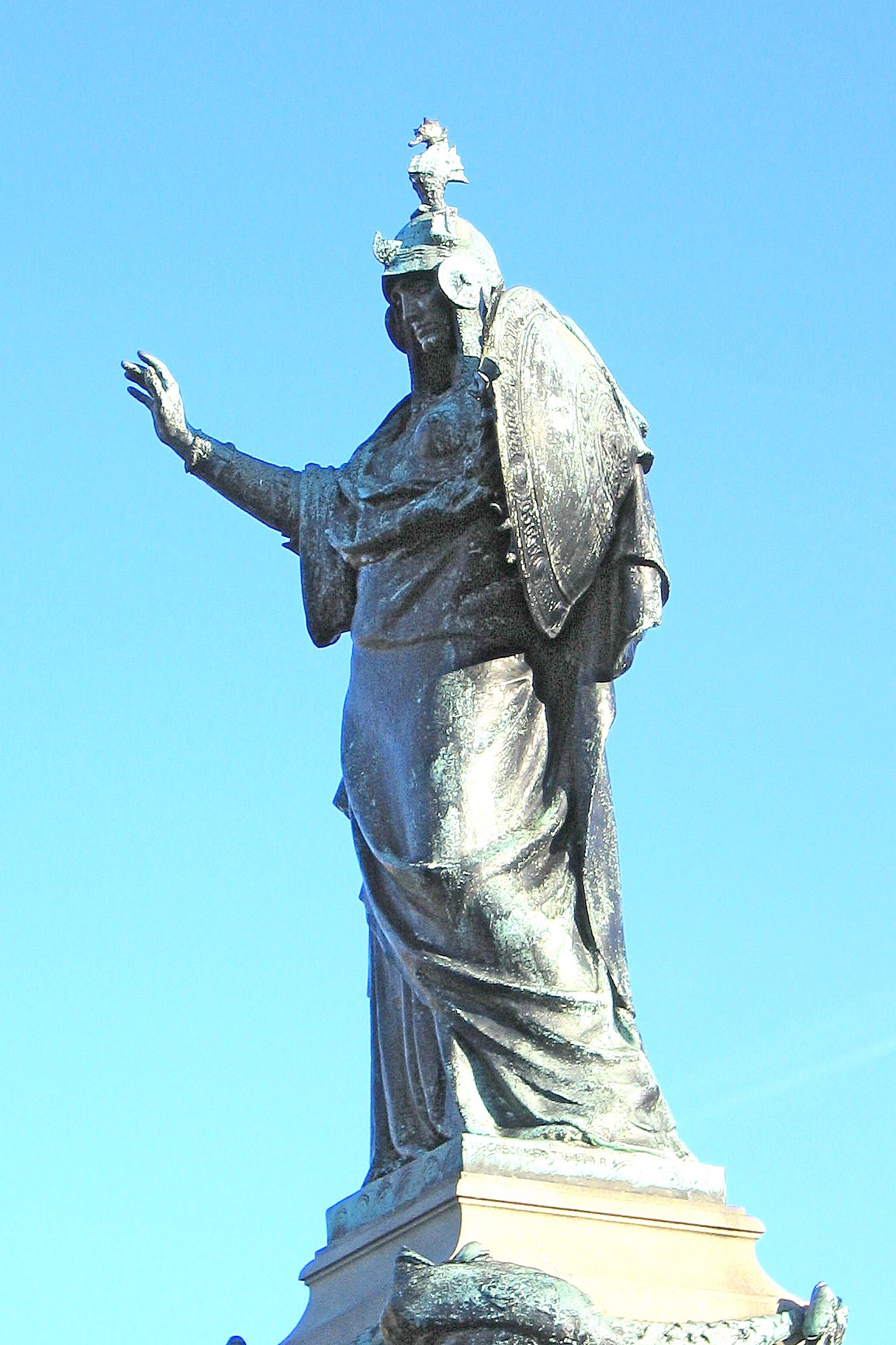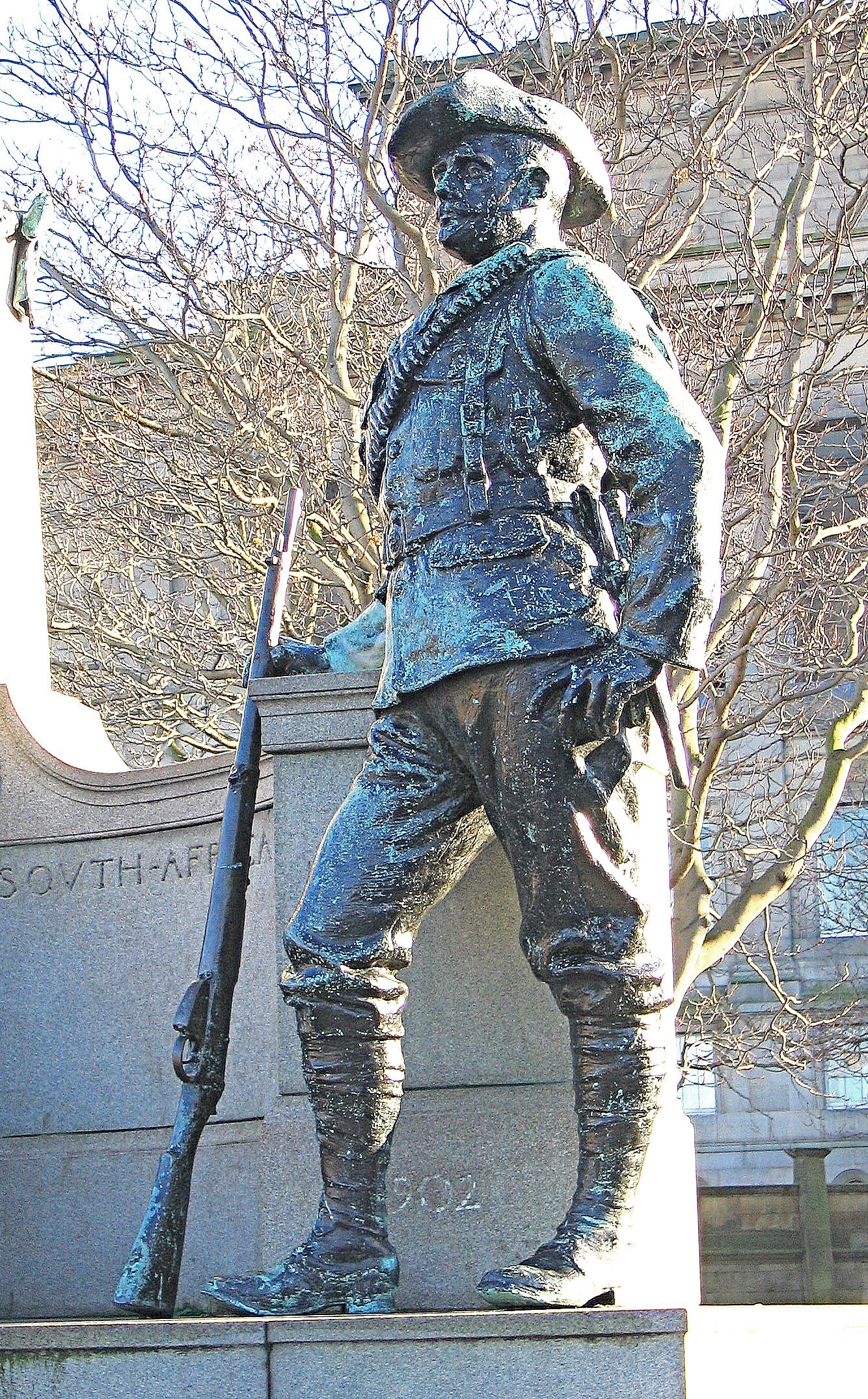
Memorial to the King's Liverpool Regiment by Sir William Goscombe John. 1905. Bronze figures etc. on grey Scottish granite. St John's Gardens, Liverpool. The memorial is one of the notable public monuments by this fine Welsh sculptor of the late Victorian/early twentieth-century period. At the top of it stands the figure of Britannia, mourning men of this old, long-established infantry regiment who lost their lives fighting in Afghanistan (1878-80), Burma (1885-87) and South Africa (1899-1902).




Photographs by Robert Freidus. Left to right: (a) Britannia flanked” by a soldeir of 1685 and the Boer War. (b) Britannia. (c) Soldier in a contemporary uniform.. (d) The drummer boy.. [Click on thumbnails for larger images.]
She is flanked on the left by a soldier of 1685 (the year in which the regiment was formed) and on the right by a soldier in contemporary uniform. At the foot of Britannia lies an arrangement of guns, wreaths and palms, with a Union Jack flag draped over it, while a drummer boy is depicted at the rear, with a musket, banners and canon behind him, the regimental badge just above him, and names of engagements such as Ladysmith inscribed on the granite to either side of him. Although the figures at the front stand cheerfully and confidently at ease, the lively drummer boy caught the public imagination more. Perhaps it shows something of the sculptor's own heritage — that lyricism, passion and love of music which so often characterise the Welsh. John himself said that the boy, "seated on a battered earthwork and shouting to his comrades, beats a stirring and joyful call to arms, forgetful of all sorrow" ("Drummer Boy"; cf. John's vigorous-looking and equally absorbed Orpheus of 1902). The whole memorial was "unveiled to critical acclaim" and is considered "a rare example of a pre-First World War, large-scale regimental monument in a public setting" (Cavanagh 180). The regiment was amalgamated with the Manchester Regiment in 1958, and is now part of the Duke of Lancaster's Regiment. (see "The King's Regiment").



Left: Seventeenth-Century Soldier. Middle: View of the monument from the rear. Right: Drummer boy. [Click on images to enlarge them.]
Other Views and Related Material
- St John's Gardens
- Goscombe John's King Edward VII monument, Pier Head, Liverpool
Photograph by the author 2009. [You may use this image without prior permission for any scholarly or educational purpose as long as you (1) credit the photographer and (2) link your document to this URL in a web document or cite it in a print one.]
Bibliography
Cavanagh, Terry. Public Sculpture of Liverpool. Liverpool: Liverpool University Press, 1997.
"Drummer Boy" (National Museum of Wales site). Viewed 15 February 2009.
"The King's Regiment: Biographical Research" (Liverpool Museums site). Viewed 15 February 2009.
Created 2 May 2011
Last modified 11 February 2020